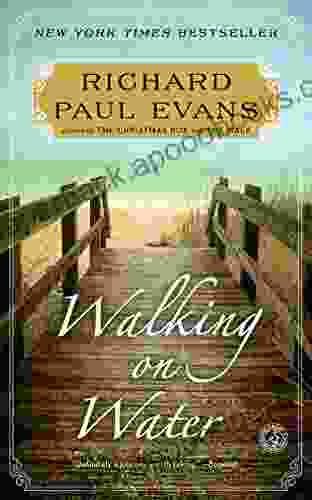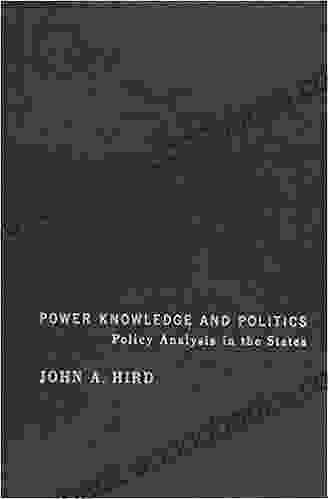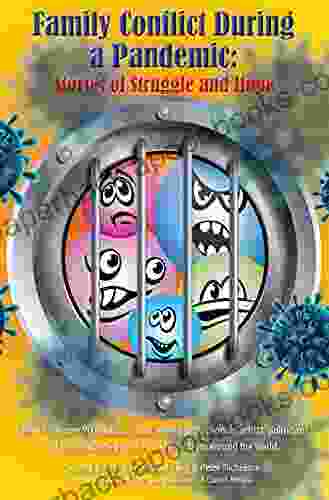Navigating Family Conflict During a Pandemic: Essential Strategies for Harmony and Resilience

In the wake of the global pandemic, families around the world have faced unprecedented challenges. Lockdowns, social distancing measures, and economic uncertainty have strained relationships and escalated tensions within the home. Conflict, once a relatively contained issue, has become a palpable presence in many households, threatening family harmony and well-being.
While conflict is a natural part of any human relationship, its impact can be exacerbated during times of crisis. The pandemic has introduced a multitude of stressors that test the limits of family bonds. Financial worries, health concerns, disrupted routines, and increased time spent together have created a breeding ground for friction. Additionally, many families are struggling with the added pressure of homeschooling, caregiving, and working from home, further straining resources and patience.
5 out of 5
| Language | : | English |
| File size | : | 10162 KB |
| Print length | : | 206 pages |
| Lending | : | Enabled |
| Screen Reader | : | Supported |
Understanding the Roots of Conflict
To effectively navigate family conflict, it is essential to understand its root causes. Some common triggers include:
- Financial Stress: Job losses, reduced income, and increased expenses can create a sense of financial insecurity and strain relationships.
- Health Concerns: Fear of illness, caring for sick family members, or dealing with the aftermath of a COVID-19 diagnosis can lead to anxiety, irritability, and conflict.
- Disrupted Routines: Abrupt changes to school schedules, work arrangements, and social activities can disrupt established routines and cause frustration.
- Increased Time Spent Together: While spending more time together can be beneficial, it can also lead to heightened conflict if boundaries and expectations are not clearly established.
- Caregiving Responsibilities: Families with young children, elderly relatives, or individuals with disabilities may face increased caregiving burdens, leading to stress and conflict.
- Working from Home: Combining work and family life can blur boundaries and create conflicts between work demands and family responsibilities.
Effective Conflict Management Strategies
Acknowledging the root causes of conflict is the first step towards developing effective management strategies. Here are some evidence-based techniques to promote family harmony and resilience:
1. Open and Honest Communication
The cornerstone of conflict resolution is open and honest communication. Engage in respectful conversations about concerns, needs, and expectations. Listen actively to each other's perspectives, even if you don't agree. Avoid blaming or accusing language, and focus on finding common ground.
2. Establish Clear Boundaries and Expectations
Clearly defined boundaries are essential for minimizing conflict. Discuss and agree on house rules, schedules, and expectations for shared spaces and responsibilities. This helps prevent misunderstandings and fosters a sense of predictability.
3. Practice Active Listening
Active listening involves paying undivided attention to what someone is saying, both verbally and nonverbally. Demonstrate empathy, understanding, and a willingness to see things from the other person's perspective. Avoid interrupting or dismissing their feelings.
4. Seek Professional Help if Needed
If family conflict persists or becomes unmanageable, don't hesitate to seek professional help. Family therapy can provide a safe and structured environment for addressing issues, improving communication, and developing coping mechanisms.
5. Promote Self-Care and Stress Reduction
Taking care of yourself is essential for managing stress and preventing conflict. Engage in activities that promote physical and emotional well-being, such as exercise, meditation, or spending time in nature. Set aside regular time for self-care to recharge and maintain perspective.
6. Focus on Shared Goals and Values
During challenging times, it is helpful to focus on shared goals and values that unite the family. Remind each other of what you are working towards and the values that are important to you. This can foster a sense of purpose and cooperation.
Building Family Resilience
In addition to managing conflict effectively, it is equally important to build family resilience. Here are some strategies to foster resilience:
1. Prioritize Quality Time Together
Make dedicated time for family activities that bring joy and connection. Engage in shared hobbies, have family meals together, or simply spend time talking and catching up.
2. Cultivate Gratitude and Appreciation
Express gratitude for the good things in life, both big and small. Focus on the positive aspects of your family relationships and acknowledge the contributions of each member.
3. Foster Emotional Regulation and Coping Skills
Teach children and adolescents healthy ways to express and regulate their emotions. Encourage them to talk about their feelings, practice mindfulness, and engage in activities that promote emotional well-being.
4. Seek Support from Outside Resources
Connect with extended family, friends, support groups, or community organizations for support and encouragement. Building a network of people you can turn to during stressful times can strengthen your family's resilience.
5. Embrace a Growth Mindset
View challenges as opportunities for growth and learning. Encourage family members to reframe conflicts as opportunities to strengthen relationships and develop new coping mechanisms.
Navigating family conflict during a pandemic is a complex and challenging experience. However, by understanding the root causes of conflict, employing effective management strategies, and building family resilience, families can emerge from this crisis stronger and more united.
Remember, conflict is not a sign of failure. It is an opportunity for growth, connection, and learning. By embracing these strategies, families can cultivate harmony, resilience, and a renewed sense of purpose.
5 out of 5
| Language | : | English |
| File size | : | 10162 KB |
| Print length | : | 206 pages |
| Lending | : | Enabled |
| Screen Reader | : | Supported |
Do you want to contribute by writing guest posts on this blog?
Please contact us and send us a resume of previous articles that you have written.
 Book
Book Novel
Novel Page
Page Chapter
Chapter Text
Text Story
Story Genre
Genre Reader
Reader Library
Library Paperback
Paperback E-book
E-book Magazine
Magazine Newspaper
Newspaper Paragraph
Paragraph Sentence
Sentence Bookmark
Bookmark Shelf
Shelf Glossary
Glossary Bibliography
Bibliography Foreword
Foreword Preface
Preface Synopsis
Synopsis Annotation
Annotation Footnote
Footnote Manuscript
Manuscript Scroll
Scroll Codex
Codex Tome
Tome Bestseller
Bestseller Classics
Classics Library card
Library card Narrative
Narrative Biography
Biography Autobiography
Autobiography Memoir
Memoir Reference
Reference Encyclopedia
Encyclopedia Lakota Grace
Lakota Grace Susan Page Davis
Susan Page Davis Mina Seckin
Mina Seckin Joe Minichino
Joe Minichino Jeanne Steig
Jeanne Steig Terry Atkinson
Terry Atkinson Jim Harmon
Jim Harmon Teresa Crane
Teresa Crane Tr Pearson
Tr Pearson Timothy V Rasinski
Timothy V Rasinski M F Soriano
M F Soriano Jody Spiro
Jody Spiro Nicholas Hill
Nicholas Hill Ruby Dixon
Ruby Dixon Jennifer D Klein
Jennifer D Klein Marie Lu
Marie Lu Natalie Y Moore
Natalie Y Moore Joe Summers
Joe Summers Jedediah Purdy
Jedediah Purdy Jennifer Coken
Jennifer Coken
Light bulbAdvertise smarter! Our strategic ad space ensures maximum exposure. Reserve your spot today!
 Jerry HayesFollow ·6.9k
Jerry HayesFollow ·6.9k Nikolai GogolFollow ·10.1k
Nikolai GogolFollow ·10.1k Shannon SimmonsFollow ·13.9k
Shannon SimmonsFollow ·13.9k Fernando BellFollow ·13.1k
Fernando BellFollow ·13.1k Jarrett BlairFollow ·13k
Jarrett BlairFollow ·13k Christian CarterFollow ·13.2k
Christian CarterFollow ·13.2k Jamison CoxFollow ·9.9k
Jamison CoxFollow ·9.9k Wesley ReedFollow ·17.9k
Wesley ReedFollow ·17.9k

 Preston Simmons
Preston SimmonsEmbark on a Literary Odyssey with "Walking on Water": A...
Prepare to be swept...

 Ernesto Sabato
Ernesto SabatoUnlocking Policy Analysis: Dive into the Intricacies of...
: The Realm of Policy...

 Forrest Reed
Forrest ReedThe Road to Grace Walk: A Journey of Spiritual Growth and...
In the tapestry of life, we...

 Evan Simmons
Evan SimmonsTip Neill and the Democratic Century: A Political Odyssey...
The Rise of a Political Giant In the...

 Mark Mitchell
Mark MitchellUnwrap the Magic: A Review of Christmas Memory by Richard...
As the cold winter months draw near, and...

 Percy Bysshe Shelley
Percy Bysshe ShelleyBeyond the Veil: Delve into the Realm of Spirit with In...
Unveiling the Mysteries of the Unseen...
5 out of 5
| Language | : | English |
| File size | : | 10162 KB |
| Print length | : | 206 pages |
| Lending | : | Enabled |
| Screen Reader | : | Supported |












